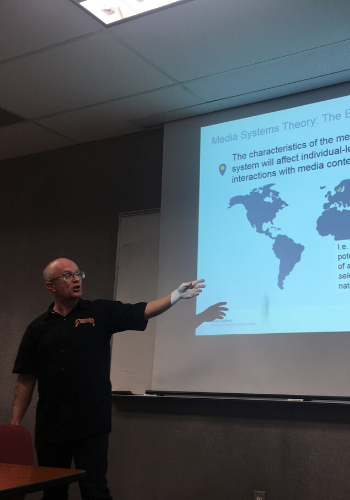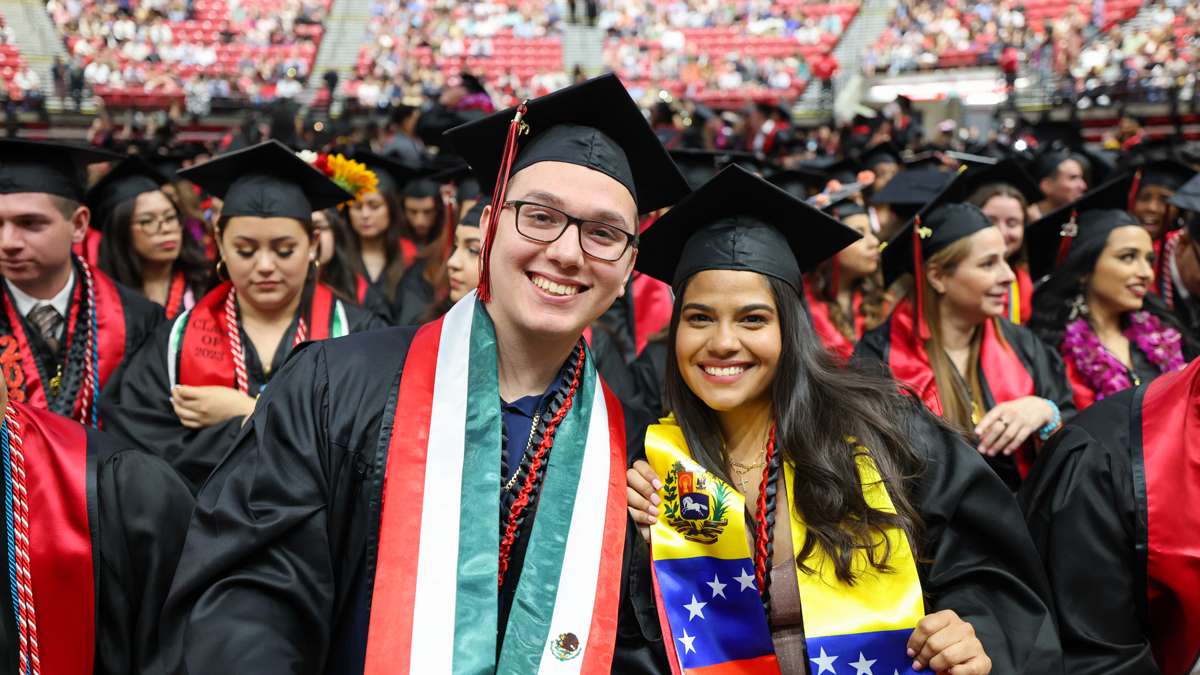Swedish Scholar Visits SDSU to Collaborate with JMS

In November 2019, the School of Journalism and Media Studies received a visit from Dr. Henrik Örnebring, a professor of Media and Communication in the Department of Geography, Media and Communication at Karlstad University in Sweden. Dr. Örnebring has experience working at universities in London and Sweden, but desired to experience the American university system. This desire drew him to SDSU where he spent two weeks immersing himself in various university events, guest lecturing for JMS 600A, and partnering with JMS professor Amy Schmitz Weiss on a number of research efforts.
Dr. Örnebring met Schmitz Weiss a few years ago at the International Communication Association (ICA), where they realized their research interests aligned. Dr. Örnebring focuses his current research efforts on local and spatial journalism, a topic that Schmitz Weiss introduced to SDSU in spring 2012 with the creation of the AztecCast application for mobile devices. Spatial journalism integrates space, location and place into the process and practice of journalism—a practice that Dr. Örnebring had expressed interest in applying to the analysis of journalism.
During his time at SDSU, Dr. Örnebring and Schmitz Weiss began collaborating on a project to establish the theoretical perspective of journalism as a mobile practice. Örnebring stated, “We’re interpreting the entire history of journalism as a history of mobility. To be a journalist you have to go to places…Basically, there’s a lot of things in journalism that are about moving around and being mobile even before phones.”
Örnebring expanded on this concept and connected the mobile practices of journalism to democracy. “If a journalist must cover an event in a foreign country, do they have the right to travel in and out of their country freely? If you want to vote you must go to a polling place. Fundamental human rights are linked to the ability to move around. So, [spatial journalism] is also a different way to talk about journalism and democracy because a democracy rests on things like a right to free assembly, to gather in one place.”
Dr. Örnebring and Schmitz Weiss also plan on conducting a comparative analysis between newsrooms in the United States versus those in Sweden. During his time in San Diego, Dr. Örnebring was able to visit the San Diego Union-Tribune and KPBS to witness first-hand how these newsrooms breathe and function.
In addition to his research, Dr. Örnebring stated that he plans on sharing his experience with the JMS graduate program with his university in Sweden. “It was interesting to talk to Dr. Schmitz Weiss and Dr. Feng about the master’s program because we just launched our master’s program [in Sweden] and had our first cohort of students. [At SDSU] there is an established master’s program, so I chatted to them about course structure and how they organize things, so that I will take back [to Sweden] for sure. Everyone who I’ve met in the department has been super nice and has taken the time to engage. So, from that point of view, even though I have only been here for two weeks, I feel like I’ve gotten a whole experience.”
To follow Schmitz Weiss in her research on spatial journalism, visit her website https://digitalamy.com/spatial-journalism/.
The content within this article has been edited by Lizbeth Persons.

